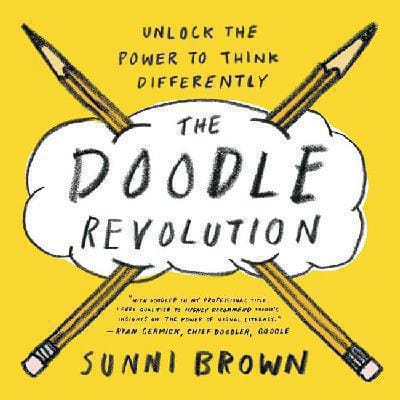Do you doodle? Can you doodle a poodle or a curly pasta noodle? Lest it sounds like I’m about to recommend a Dr. Seuss tale, please bear with me. “Doodle” is one of those words that makes me smile when I say it. So naturally, when I saw this week’s book on the shelf at the library, I just had to check it out. Now, not only is “doodle” a favorite word, it will become one of my favorite pastimes thanks to Sunni Brown’s compelling argument for a “doodle revolution.”
According to the author, two perceptions must be dismissed before the revolution can take place. The first one, very common among adults, is that they can’t draw. Sunni Brown argues that she has “not yet met an adult who skipped childhood — a period in which most of us are happy to draw — and went straight to being a 40-year-old.” If you can scratch out a stick figure, you can draw. The second perception, also unfortunately acquired in adulthood, is that doodling is a waste of time. If you fall into this camp — it’s OK, lots of people do — I will argue that once you’ve read this book you’ll come to see doodling as the author does: thinking in disguise.
Using a combination of amusing anecdotes, fun exercises and relatable examples from work and personal experiences, Brown elevates the doodle from an ill perceived time-waster to a powerful thinking tool.
While her approach may be light-hearted, her message is anything but. Being able to express ourselves through visual language is so important, she says, that if we ignore its value, we are in danger of “crippling … our innate capacity to explore, learn, remember, and think more effectively.”



